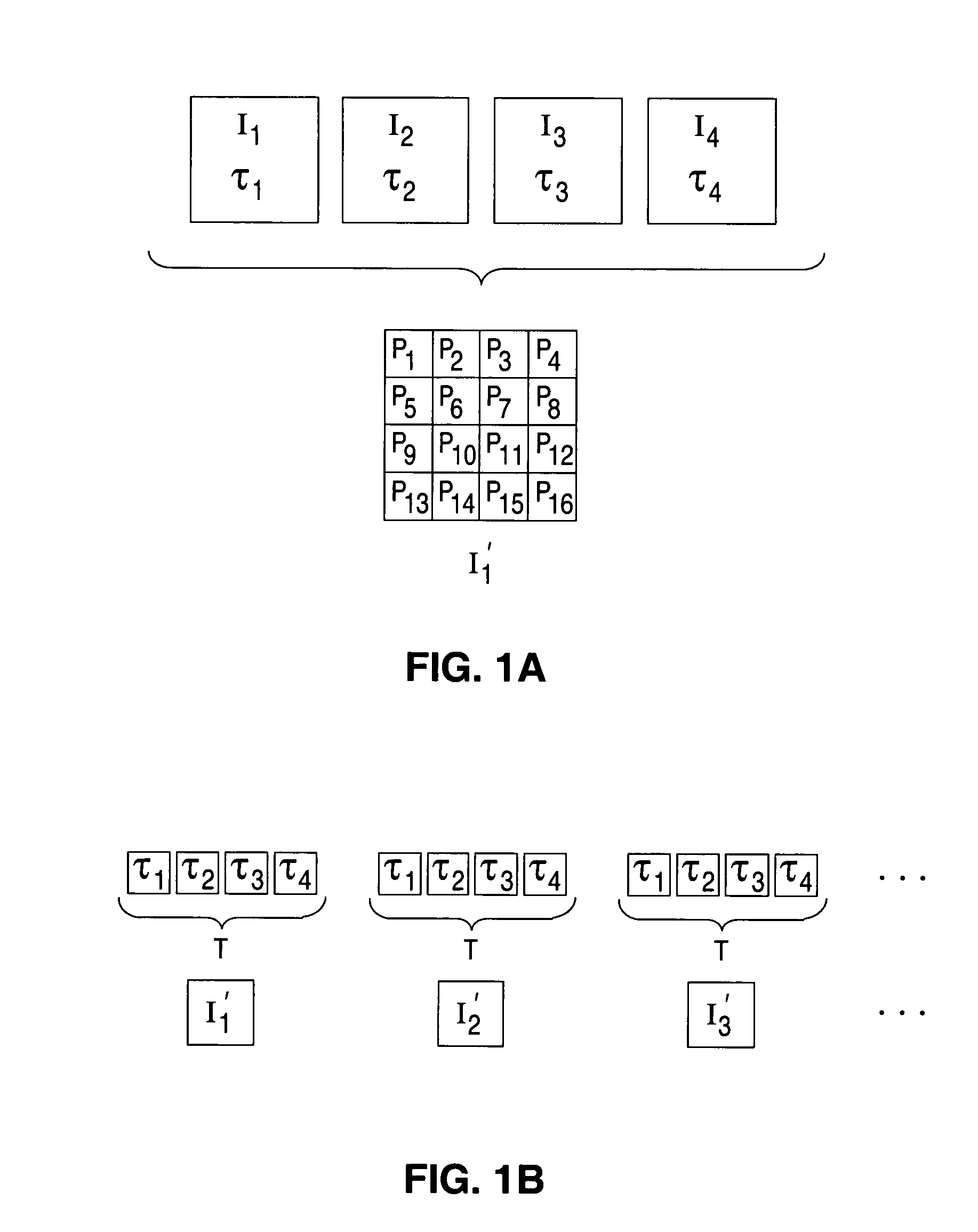Infrared and near-infrared camera hyperframing
a hyperframing and infrared technology, applied in the field of infrared (and nearinfrared) cameras, can solve the problems of not being able to fully encompass the brightness (temperature) variations of a scene using a single integration time, and not being able to fully cover the brightness variations of a scene with a single exposure value, etc., to achieve the effect of improving the dynamic range detection of ir
- Summary
- Abstract
- Description
- Claims
- Application Information
AI Technical Summary
Benefits of technology
Problems solved by technology
Method used
Image
Examples
Embodiment Construction
[0033]Systems and techniques provided herein may allow for enhanced dynamic range capability in thermal IR and near-IR imaging. For simplification, the term “IR” herein encompasses both IR and near-IR spectral ranges, while the term “near-IR” refers particularly to the near-IR part of the spectrum, ranging in wavelength from about 900 to about 1700 nm.
[0034]One technique that may be used to increase the dynamic range of an IR imaging system is electronic superframing. Superframing refers to a process by which image data for a plurality of images (subframes) is combined to generate a single image with enhanced dynamic range. Each of the subframes has a different exposure, which may be controlled (for example) by changing the shutter speed and / or integration time of the imaging system.
[0035]The superframing technique is particularly useful for infrared camera systems that are used to image scenes with large difference in temperature, such as the rocket launch described above. With pri...
PUM
 Login to View More
Login to View More Abstract
Description
Claims
Application Information
 Login to View More
Login to View More - R&D
- Intellectual Property
- Life Sciences
- Materials
- Tech Scout
- Unparalleled Data Quality
- Higher Quality Content
- 60% Fewer Hallucinations
Browse by: Latest US Patents, China's latest patents, Technical Efficacy Thesaurus, Application Domain, Technology Topic, Popular Technical Reports.
© 2025 PatSnap. All rights reserved.Legal|Privacy policy|Modern Slavery Act Transparency Statement|Sitemap|About US| Contact US: help@patsnap.com



